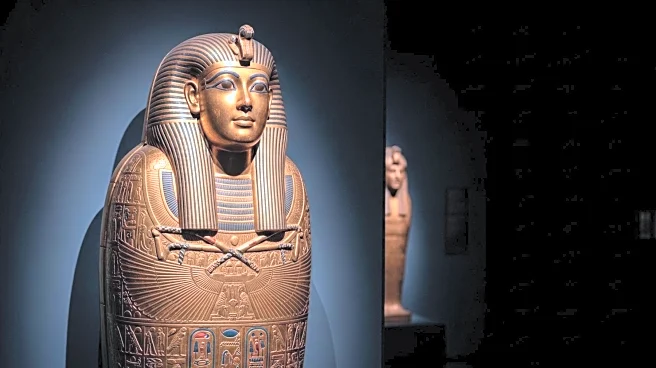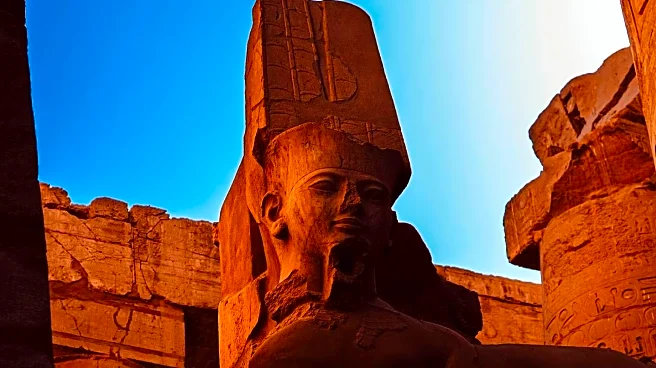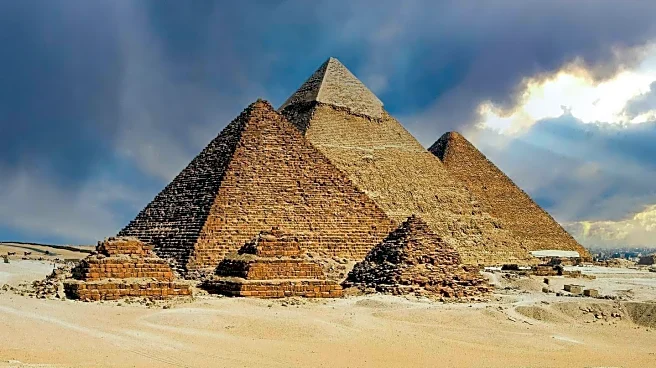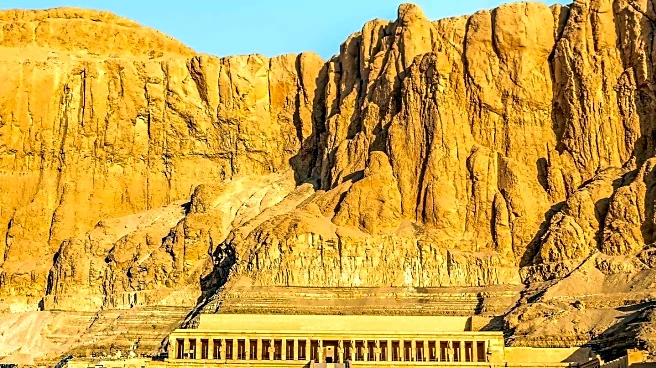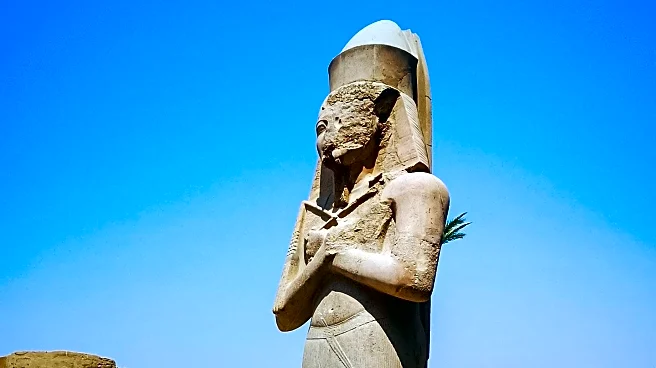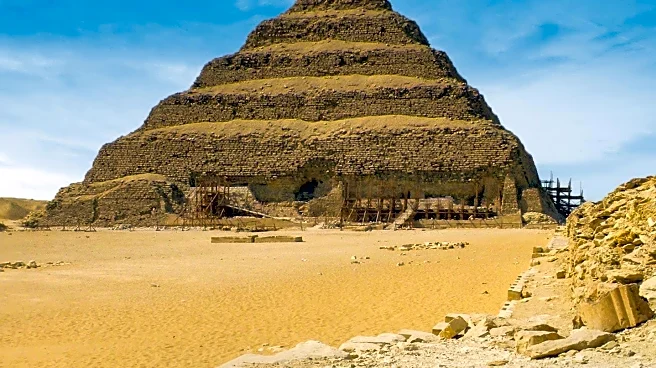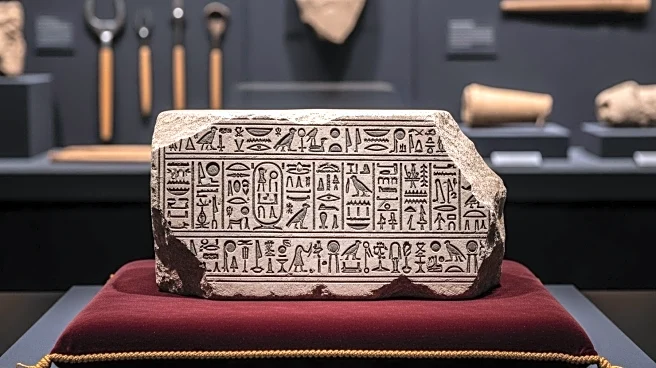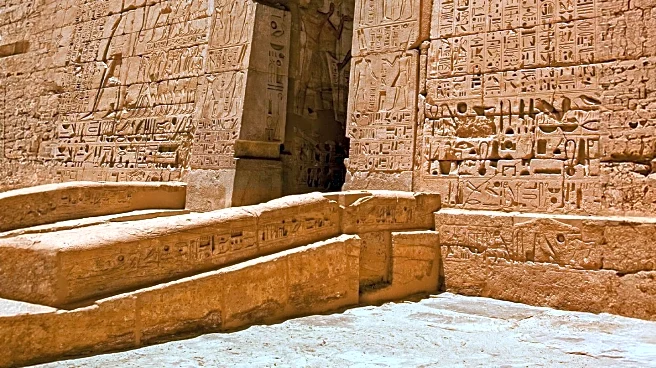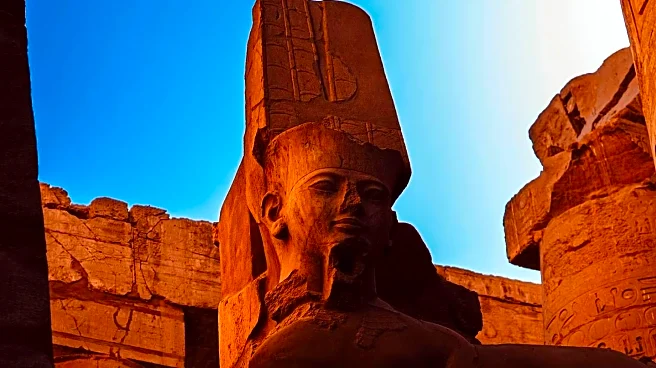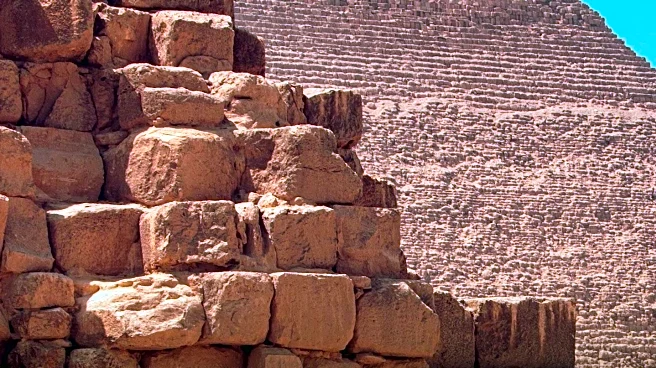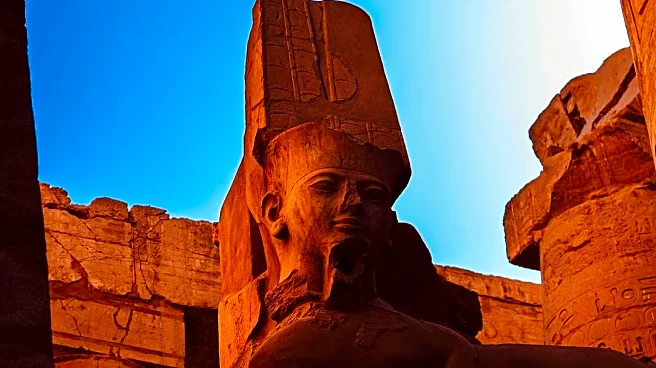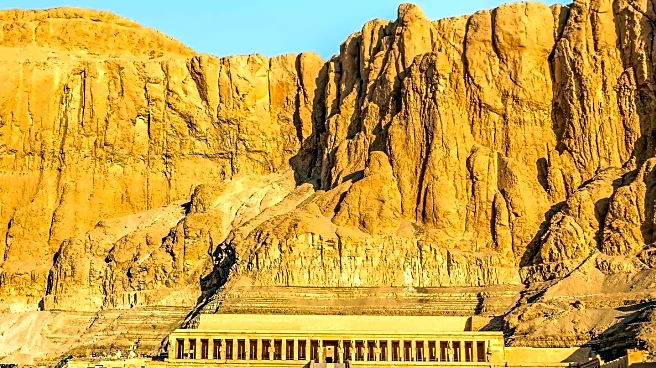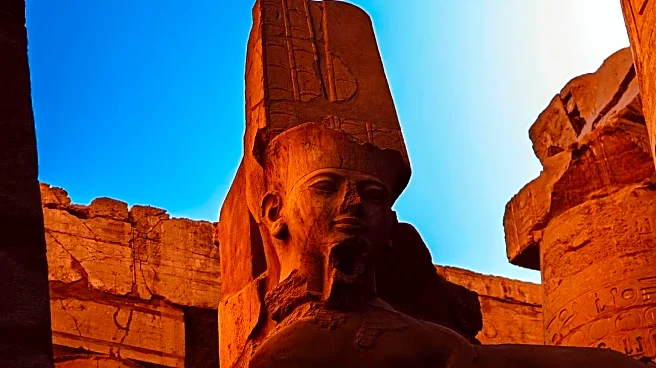What is the story about?
What's Happening?
An artwork depicting the seasons of the ancient Egyptian calendar has been reported missing from the Saqqara Necropolis, a significant archaeological site in Egypt. The theft was discovered by a British mission working in the tomb of Khentika, a priest and overseer from the 6th dynasty of the Old Kingdom, dating back to approximately 2700 B.C.E. to 2200 B.C.E. The missing piece, a painted limestone relief, measures two feet wide and illustrates the three seasons of the Nile River: Akhet, Proyat, and Shomu. The artifact is not only decorative but holds profound symbolic meaning related to ancient Egyptian beliefs about life, agriculture, and fertility. The theft was made public recently, although it was discovered as early as May. Egyptian authorities, including the Supreme Council of Antiquities, are investigating the incident.
Why It's Important?
The theft of this culturally significant artifact highlights ongoing challenges in protecting and preserving ancient heritage sites. The loss of such artifacts can have a profound impact on historical research and cultural understanding. This incident underscores the need for enhanced security measures at archaeological sites, which are often targets for theft due to the high value of ancient artifacts on the black market. The theft also raises questions about the effectiveness of current preservation strategies and the international demand for stolen cultural property. The incident could lead to increased scrutiny and potential policy changes regarding the protection of cultural heritage sites worldwide.
What's Next?
Egyptian authorities are likely to intensify their efforts to recover the stolen artifact and prevent future thefts. This may involve increased security measures at archaeological sites and collaboration with international organizations to track and recover stolen cultural property. The incident may also prompt discussions on international cooperation to combat the illegal trade of antiquities. Additionally, the upcoming opening of the Grand Egyptian Museum, which aims to showcase Egypt's rich cultural heritage, may lead to heightened awareness and efforts to protect such invaluable assets.
Beyond the Headlines
The theft of the artwork from Saqqara Necropolis could have broader implications for the global art market and the ethical considerations surrounding the acquisition of ancient artifacts. It highlights the ongoing tension between preserving cultural heritage and the demand for such items in private collections. This incident may lead to increased advocacy for stricter regulations and ethical guidelines in the art world to prevent the sale and distribution of stolen cultural property.
AI Generated Content
Do you find this article useful?
